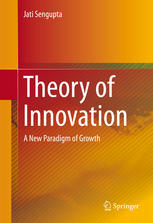

Most ebook files are in PDF format, so you can easily read them using various software such as Foxit Reader or directly on the Google Chrome browser.
Some ebook files are released by publishers in other formats such as .awz, .mobi, .epub, .fb2, etc. You may need to install specific software to read these formats on mobile/PC, such as Calibre.
Please read the tutorial at this link: https://ebookbell.com/faq
We offer FREE conversion to the popular formats you request; however, this may take some time. Therefore, right after payment, please email us, and we will try to provide the service as quickly as possible.
For some exceptional file formats or broken links (if any), please refrain from opening any disputes. Instead, email us first, and we will try to assist within a maximum of 6 hours.
EbookBell Team

5.0
38 reviewsThe current economic theory of innovation mainly analyses the technology factor and its impact on economic growth. In today's world, growth in information technology and knowledge of new ideas has altered the business paradigm dramatically. Modern economies have undergone a dynamic shift from material manufacturing to a new information technology model with research and development (R&D) and human capital. Through information and communications technology efficient information usage has achieved substantial productivity gains through learning by doing and incremental innovations. The present volume discusses this new paradigm in terms of both theory and industry applications, including Schumpeter in his innovation model and the emphasis on new innovations replacing the old. Growth of business networking and R&D consortium have dramatically helped the modern business to reduce their unit costs and improve efficiency. This volume presents some new models emphasizing knowledge sharing and R&D cooperation. Rapid growth in recent times in some south Asian countries have been cited as growth miracles are largely caused by knowledge spillover and learning by doing, and this volume also investigates the role of incremental innovations. With a strong focus and extension of the current theory of innovation and industry growth experiences of both the US and Asian countries, this book will be of interest to MBA and graduate students in economics, innovation management, and applied industrial economics.